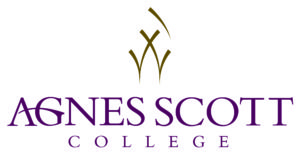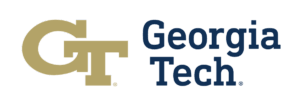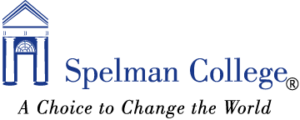The GSGC sponsors student internships at colleges and universities, NASA, and in industry. Additionally the GSGC sponsors student hands on projects and extracurricular team activities such as the University Student Launch Initiative team, Microgravity teams, Mars Desert Research Stations teams, etc. If you are interested in participating in one or more of the programs listed below, please contact the Affiliate Director at the hosting institution. Contact information is located on our Affiliate’s page.
Other applications for fellowships, internships and scholarships can be found on our Opportunities page.
NASA Center Internships:
NASA Center Internships
NASA Centers across the country offer student internships during the Fall, Spring, and Summer semesters. Fall and Spring internships are 16 weeks long, and Summer internships are 10 weeks long. Complete your application at NASA’s Interns website: intern.nasa.gov
To request GSGC stipend support for a NASA Center Internship, you must also complete GSGC’s Student Support Request application
University/College Affiliate Programs:
Agnes Scott College: Agnes Scott NASA Scholars
Two scholarships are granted to students at the sophomore or junior level, one in the area of astronomy outreach, and the other in the area of astronomy research. The scholarships will be named NASA Outreach Scholar and NASA Research Scholar. The goal of these scholarships is to increase the number and diversity of astronomy and physics majors at Agnes Scott College, to provide graduates with the necessary skill sets for STEM related work, and to highlight the importance of both research and outreach in NASA’s mission. The College will announce the scholarships ($5000 each) in the fall of 2017 for use during spring of 2018.

A Microwave absorber is composed of lossy dielectric material backed by a conductor and absorbs certain frequency when complex permittivity and thickness of the lossy dielectric material is chosen properly. In this project, lossy dielectric material will be replaced by metamaterial whose complex permittivity will be adjusted manually with metal strips, periodically loaded into a given material. Pre-engineering students will first choose a design frequency and determine the required complex permittivity and thickness for the absorber by solving two simultaneous equations derived from impedance matching criteria between free space and absorber. Students will use HFSS simulation software to determine the size of metal strip to achieve the desired complex permittivity. Once material thickness and complex permittivity are known, student will be able to fabricate desired absorber. Performance of designed absorber will be evaluated first by HFSS simulation and then finally will be tested in the microwave Lab of Georgia Southern University.

Highly successful program of undergraduate student research at Columbus State University and its Coca-Cola Space Science Center by establishing year-long research scholarships for six or more students (with scholarships scaled to hours worked). These research projects not only help to recruit and retain students in NASA and STEM-related disciplines, but allow hands-on research and observing experience that gives them necessary tools for success in careers in STEM and STEM education, including graduate schools where appropriate. Our institution is particularly well-equipped to enable early, direct engagement of undergraduates in research, due to our faculty expertise in astronomy and earth science; high faculty-to-student ratio; and local observatory facilities. Additionally, these students often turn their observing and research into opportunities for education and public outreach, which further promotes interest in astronomy among K-12 students and the general public.

The GSGC provides paid Graduate Research Fellowships to Georgia Tech graduate students to work under the direction of Georgia Tech faculty (GRA). If you are interested in being considered for an upcoming semester this academic year, please complete the application form here.
GSU offers the only astronomy doctorate program in Georgia, and offers research experience opportunities in ground- and space-based observational astronomy.
The overall goal of the Applied Leadership Program is to facilitate college students (STEM majors) in developing the leadership skills and knowledge needed to assist pre-college students in becoming more successful in STEM areas and to increase the college and pre-college students’ exposure to the career options of the space science industry. The primary objective is to continue to operate and improve an existing program in which 24 STEM scholars from the College of Science and Mathematics (CSM) participate in a year-long training session that trains the students to be able to understand some of the factors that enhance the learning of STEM concepts and how such concepts relate to the missions of NASA.
The Open Robotics Laboratory (Machine Intelligence and Robotics Laboratory, MIRL) was developed in the new Science and Engineering Building with work benches, equipment, consumable materials, and large open floor space for experiments. The Laboratory is open to any student with interests in robotics or intelligent machines. Students can walk into the lab and start on predefined small projects, larger projects with other members, research projects led by senior undergraduate or graduate student, or their own projects.
AI and Robotics have been identified as huge opportunity areas for research and commercialization. Innovative research in unmanned vehicle will expose students to both of these areas of research. Students will develop state of the art unmanned vehicles, which are flexible and robust. These unmanned vehicles will create the necessary infrastructure to conduct research related to NASA interests and goals. Unmanned vehicle infrastructure will enable students to conduct research in remote exploration, hazardous reconnaissance, cooperative search, cooperative swarm behavior, etc. It has wide impact with forty students getting direct hands-on experience various autonomous robotic systems. MIRL is currently developing and refining autonomous Quadcopter, semiautonomous underwater vehicle, semiautonomous kayak, NASA/JPL Mar’s Rover vehicle, universal vehicle operator robot, etc. Video example of one of our unmanned vehicles: http://db.tt/Zj9nZboR. We have established collaborative research efforts with Robotic Systems Laboratory (Santa Clara University), Institute for Applied Aerospace Research (MGSU), and Guardian Center (Perry, GA).

The SSU NASA GA Space Grant Scholars Program aims to provide up to 15 scholarships to underrepresented students in STEM disciplines that are of relevance to the NASA mission. Student selection criteria includes GPA, major, classification, and a student application.

Spelman has sustained efforts to build exemplary undergraduate programs in science, technology, engineering, and mathematics (STEM) that reflect student interest and rigorous academic training. The College is one of six Model Institutions for Excellence designated by the National Science Foundation (NSF) for its significant track record for recruiting, retaining, and graduating African-American women in science and for serving as a catalyst for their subsequent graduate study and pursuit of professional careers. In addition, NSF ranks Spelman as the #1 bachelor’s degree granting institution of African-American women who have obtained doctorate degrees in STEM fields. Spelman’s sustained success considered against the current national backdrop illustrates the critical role the institution plays in preparing students to contribute to a diverse STEM workforce. Complementing the shared goal of the National Aeronautics and Space Administration (NASA) and the Georgia Space Grant Consortium (GSGC) of addressing the national crisis for STEM talent, we are requesting funding for scholarships to be awarded to students majoring in a physical science or mathematics who are currently engaged in NASA relevant research.

For the past seven years, Spelman College has been invited by Massachusetts Institute of Technology to bring high achieving students interested in pursuing STEM careers to its Quantitative Biology workshop. This is an intensive 7-day workshop to expose undergraduate students to quantitative methods used in data analysis. The workshop covers topics in biochemistry, genetics, biostatistics, neuroscience, systems biology and computational biology. Participants are introduced to MATLAB, Python and possibly other software (R and Pymol) that are used in STEM research. Offering this program to our students illustrates the critical role the institution plays in preparing students to contribute to a diverse STEM workforce. Complementing the shared goal of the National Aeronautics and Space Administration (NASA) and the Georgia Space Grant Consortium (GSGC) of addressing the national crisis for STEM talent, we are requesting funding for our students to attend the MIT Quantitative Biology workshop as a developmental tool to cultivate their ability to persist in STEM arena.

Ground-truthing satellite observations with in situ tower measurements remains an unresolved challenge despite the proliferation of satellites and drone platforms. Even with the emergence of new satellites with increasing resolution and those with increased capability such as the new carbon dioxide observatory, ground-truthing satellite observations with surface measurements remains a pressing need. Sophisticated signal processing to quantitatively address the sub-pixel scale surface inhomogeneities needs to be developed to determine land surface properties as seen from space. The present study seeks to improve the interpretation of measurements of surface properties using a combination of remote sensing and in situ ground-based flux measurements to derive a strategy aimed at quantifying the evapotranspiration at the field scale. While satellite observations provide information at the pixel scale to characterize contrasting inhomogeneous field properties the golden standard in measurements of gas exchange is the aerodynamic method combined with footprint modeling. These will be used to test the various algorithms used in the ground-truthing. Differences between field-scale flux measurements and remote sensing will be examined in the light of spatial surface signatures characteristics superimposed over remote sensing maps.

The North Georgia Space Grant Fellowship program awards monetary prizes to students, who show exceptional promise in STEM fields. The program, if funded, plans to award eight fellowships with two recipients coming from each class (freshman, sophomore, junior and senior). Academic prowess in physics and related fields as well as interest and research in the space sciences are considered in the award process.

The North Georgia Astronomical Observatory (NGAO) Resident Observer hires one undergraduate student per summer to act as a resident observer. Their duties would include: acting as a telescope operator for introductory astronomy courses, engaging with the local community during nightly public observing sessions, and performing astronomical research using the telescopes and instruments at the NGAO. The proposed research will focus on determining the fundamental properties of stars in eclipsing binary systems by taking advantage of NGAO’s ability to simultaneously acquire multiband time-series photometric images and high resolution optical spectra. The program also covers the resident observer’s room and board at the University of North Georgia for the ten-week summer research experience.

This undergraduate research program focuses specifically on studying the dependence of the electrical resistance of carbon-based nano-materials, such as nano-diamonds, on temperature, pressure and humidity, and into NASA’s application of these materials in the space program.
Industry Affiliate Programs:
Generation Orbit Internships
Generation Orbit provides paid internship opportunities for college-age students at their facilities in Atlanta, GA. Students are given challenging and representative engineering tasks related to engineering software development, high-speed flight systems, and multi-disciplinary design in a New Space entrepreneurial environment. The current proposal extends our existent partnership with GSGC and NASA in offering professional internships to students interested in pursuing a career in the space systems industry.

SpaceWorks provides paid internship opportunities for college-age students at their facilities in Atlanta, GA. Students are given challenging and representative engineering tasks related to NASA’s advanced space systems analysis, engineering software development, high-speed flight systems, engineering economics, and multi-disciplinary design. There is also a High School Internship Component during the summer.
